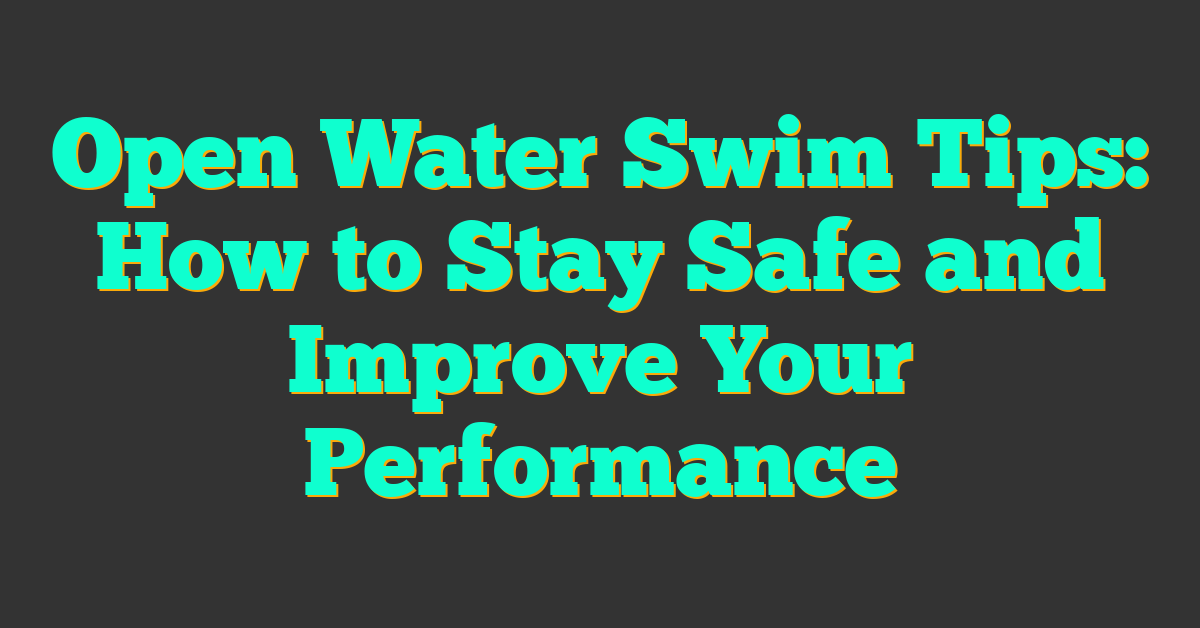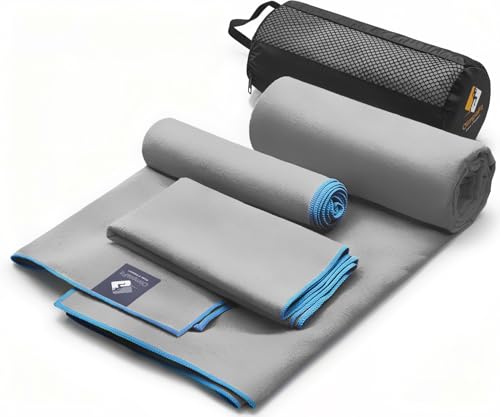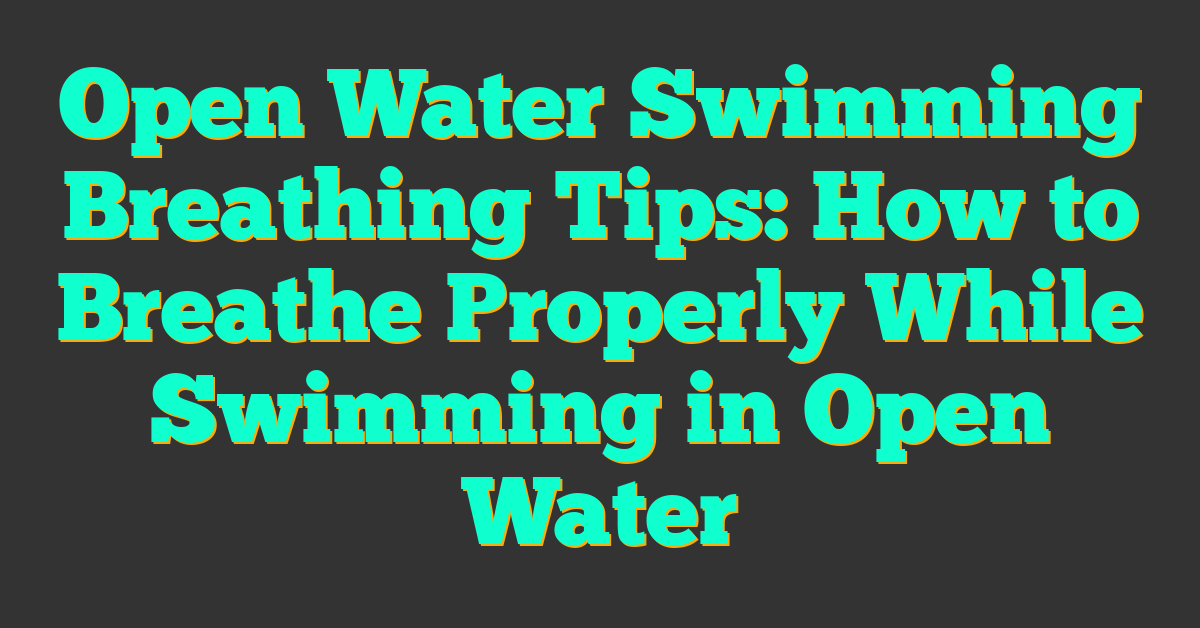Open water swimming can be a thrilling and rewarding experience for those who are willing to take on the challenge. Unlike swimming in a pool, open water swimming requires you to navigate through natural bodies of water, which can be unpredictable at times. However, with the right preparation, training, and mindset, you can conquer the open water and enjoy all the benefits that come with it.

If you’re new to open water swimming, it’s important to start slowly and gradually build up your skills and confidence. You can begin by practicing in a calm and shallow area, such as a lake or a river, and gradually progress to more challenging conditions. As you become more comfortable in the water, you can start working on your stroke technique, breathing, and navigation skills, which are essential for open water swimming.
In this article, we’ll provide you with some tips and strategies to help you get started with open water swimming, as well as some advice on how to improve your performance, stay safe, and enjoy the many benefits of this exciting sport. Whether you’re a seasoned swimmer or a beginner, there’s something for everyone in the world of open water swimming. So, let’s dive in!
Key Takeaways
- Start slowly and gradually build up your skills and confidence.
- Focus on stroke technique, breathing, and navigation skills.
- Stay safe and enjoy the many benefits of open water swimming.
Getting Started with Open Water Swimming
https://www.youtube.com/watch?v=zgKCSSiPUaE&embed=true

Open water swimming is a great way to challenge yourself and experience the beauty of nature. However, before you dive in, there are a few things you need to know to get started.
Understanding Open Water
Open water swimming is very different from pool swimming. The water is often colder, choppier, and murkier, which can be intimidating for beginners. You also need to be aware of currents, tides, and other natural hazards. Always check the weather and water conditions before you swim and never swim alone.
Choosing the Right Gear
To get the most out of your open water swimming experience, you need to have the right gear. A good pair of goggles is essential to help you see underwater and protect your eyes from the sun. A wetsuit or swimsuit is also important to keep you warm and buoyant in the water. Make sure to choose a suit that fits well and is comfortable to wear for extended periods.
Swimming Techniques and Strokes
In open water swimming, you need to be able to swim efficiently and effectively to conserve your energy and make progress. The front crawl is the most common stroke used in open water swimming, but you should also practice other strokes like breaststroke and backstroke to help you navigate through different water conditions. You can also use techniques like sighting and drafting to help you swim faster and stay on course.
In conclusion, getting started with open water swimming requires a good understanding of the water conditions, the right gear, and effective swimming techniques. With practice and experience, you can become a confident and skilled open water swimmer.
Training and Preparation
https://www.youtube.com/watch?v=SKKzhclB0Jk&embed=true
Preparing for an open water swim can be challenging, but with the right training and preparation, you can conquer the open water. In this section, we’ll discuss how to develop a training plan, build endurance and strength, and acclimate to open water.
Developing a Training Plan
Before you start training for open water swimming, you need to develop a training plan. Your training plan should include a mix of pool swimming and open water swimming. Pool swimming is a great way to improve your technique, while open water swimming will help you acclimate to the conditions you’ll face on race day.
Your training plan should also include a warm-up routine. A good warm-up routine will help you avoid injuries and improve your performance. A typical warm-up routine should include stretching and light swimming.
Building Endurance and Strength
To succeed in open water swimming, you need to build both endurance and strength. Endurance is the ability to swim for long distances without getting tired, while strength is the ability to swim with power and speed.
To build endurance, you should gradually increase the distance of your swims. Start with shorter distances and gradually work your way up to longer distances. To build strength, you should incorporate strength training exercises into your routine. Exercises like pull-ups, push-ups, and squats can help you build the strength you need to succeed in open water swimming.
Acclimatizing to Open Water
Acclimatizing to open water is essential for success in open water swimming. The conditions you’ll face in open water are different from those you’ll face in a pool. The water temperature, waves, and currents can all affect your performance.
To acclimate to open water, you should gradually increase the amount of time you spend swimming in open water. Start with short swims and gradually increase the duration of your swims. You should also practice swimming in different conditions, such as rough water and cold water.
By following these tips, you can develop a training plan, build endurance and strength, and acclimate to open water. With the right preparation, you can conquer the open water and achieve your goals as a triathlete.
Safety and Navigation
https://www.youtube.com/watch?v=2cVCRIPAu7I&embed=true
When it comes to open water swimming, safety and navigation are of utmost importance. Here are some tips to help you stay safe and navigate effectively.
Sighting and Spotting Techniques
Sighting is the act of looking up to see where you are going while swimming. It is important to sight regularly to ensure you are swimming in the right direction. To sight effectively, lift your head slightly out of the water and look forward. Try to keep your body as horizontal as possible to minimize drag. You can also use landmarks or markers on shore to help guide you.
Spotting is a technique used to locate other swimmers or boats in the water. It is important to spot regularly to avoid collisions and to stay aware of your surroundings. To spot effectively, turn your head to the side and look up. This will give you a 360-degree view of your surroundings.
Understanding and Managing Risks
« Open Water Swim Safety Tips
Open Water Swimming Breathing Tips: How to Breathe Properly While Swimming in Open Water »
Open water swimming can be risky, so it is important to understand and manage those risks. Here are some tips to help you stay safe:
- Always swim with a buddy or in a group. This will ensure that someone is there to help you in case of an emergency.
- Use a safety buoy or swim float. This will increase your visibility to boats and other swimmers and will also provide a place to rest if you get tired.
- Be aware of your surroundings. Look for boats, kayaks, and other swimmers in the water. Avoid swimming in areas with strong currents or rough waves.
- Know your limits. Don’t push yourself too hard and always listen to your body. If you feel tired or uncomfortable, take a break or head back to shore.
- Use a boat or kayak for additional safety. If you are swimming in a large body of water, consider having a boat or kayak nearby for additional safety.
By following these tips, you can ensure that you stay safe and enjoy your open water swim. Remember to always be aware of your surroundings and to never take unnecessary risks.
Performance and Competition
https://www.youtube.com/watch?v=V2VF3e4HYrs&embed=true
Pacing and Energy Management
When it comes to open water swimming, pacing and energy management are crucial for a successful race. You need to find a rhythm that works for you and stick to it throughout the race. Start strong, but don’t exhaust yourself too quickly. You don’t want to burn out before you reach the finish line.
One way to manage your energy is to use the drafting technique. This is where you swim behind another swimmer, taking advantage of the slipstream created by their body. This can help you conserve energy and maintain a steady pace. However, be careful not to rely too much on drafting, as it can be risky in crowded races.
Another way to manage your energy is to focus on your breathing. Take deep, controlled breaths and try to establish a breathing pattern that works for you. This will help you maintain a steady rhythm and avoid getting winded.
Race Day Strategies
On race day, it’s important to have a strategy in place. This includes knowing the course, the water conditions, and your own abilities. Take some time to study the course map and familiarize yourself with any potential obstacles or hazards.
Pay attention to the weather and water conditions. This will help you determine what kind of gear you need to wear and how you should approach the race. For example, if the water is choppy, you may need to adjust your stroke technique to avoid getting tossed around.
Finally, don’t forget to stay focused and motivated throughout the race. Keep your eye on the prize and remind yourself of all the hard work you’ve put in to get to this point. With the right mindset and a solid strategy, you can achieve your goals and perform at your best.
Health and Mental Well-Being
https://www.youtube.com/watch?v=5w86N3lzQQE&embed=true
Open water swimming is not only a great way to stay in shape, but it also has numerous health benefits. Swimming in natural bodies of water can help you relax and enjoy the beauty of nature. In this section, we will discuss some tips to help you maintain your health and mental well-being while open water swimming.
Dealing with Cold Water and Hypothermia
Swimming in cold water can be a challenge, but it can also be invigorating. However, it is important to be aware of the risks of hypothermia. Hypothermia occurs when your body temperature drops below normal, which can happen when you are exposed to cold water for an extended period of time. To avoid hypothermia, make sure to wear a wetsuit or other appropriate cold-water gear, and gradually ease into the water to allow your body to adjust to the temperature.
Mental Strategies and Overcoming Anxiety
Open water swimming can be an enjoyable and relaxing experience, but it can also be intimidating for some people. If you experience anxiety while swimming, try some mental strategies to help you overcome it. For example, focus on your breathing and try to slow it down. You can also visualize yourself swimming confidently and smoothly through the water. Another strategy is to break the swim into smaller, more manageable sections, and focus on completing each section one at a time.
Remember that open water swimming has numerous health benefits, including reducing stress and anxiety. It can also boost your immune system, improve your sleep, and increase your metabolism. With the right gear and mental strategies, you can enjoy the beauty of nature while maintaining your health and mental well-being.
Frequently Asked Questions

What are some effective training techniques for open water swimming?
To prepare for open water swimming, it is recommended to practice in a pool with longer distances and without touching the bottom of the pool. You should also practice sighting, which involves looking up and forward to see where you are going. Additionally, you can try swimming drills to improve your technique, such as bilateral breathing, catch-up drill, and one-arm drill.
What safety measures should I follow during open water swimming?
Open water swimming can be dangerous if proper safety measures are not followed. Always swim with a buddy or in a group, and make sure someone on shore knows where you are swimming and when you are expected to return. Wear a brightly colored swim cap to increase visibility, and consider wearing a wetsuit for warmth and buoyancy. Be aware of your surroundings, including water temperature, currents, and wildlife. If you feel uncomfortable or unsafe, exit the water immediately.
How can I improve my breathing technique in open water?
Breathing to both sides, or bilateral breathing, is recommended in open water. Practice this technique in a pool before attempting it in open water. You should also practice taking quick, shallow breaths to avoid swallowing water. It is also helpful to practice rhythmic breathing, where you take a breath every third or fifth stroke.
What are the key rules to know for open water swimming competitions?
Open water swimming competitions have rules similar to those of pool swimming competitions, but with some differences. For example, you may need to swim around buoys or navigate a course with no lane markers. You should also be aware of the start and finish procedures, as well as any specific rules regarding drafting or contact with other swimmers.
What kind of footwear is appropriate for open water swimming?
In general, you do not need to wear footwear for open water swimming. However, if the bottom of the body of water you are swimming in is rocky or uneven, you may want to consider wearing swim shoes or booties for protection.
What are the health benefits of participating in open water swimming?
Open water swimming provides numerous health benefits, including improved cardiovascular health, lower blood pressure, regulated blood sugar, stronger immune system, and healthy weight. It also provides an opportunity to reduce stress and connect with nature.










